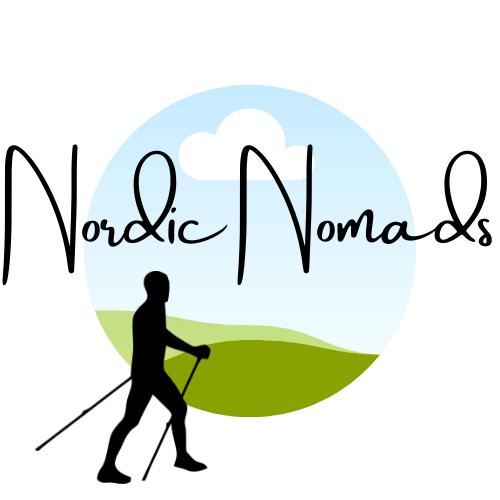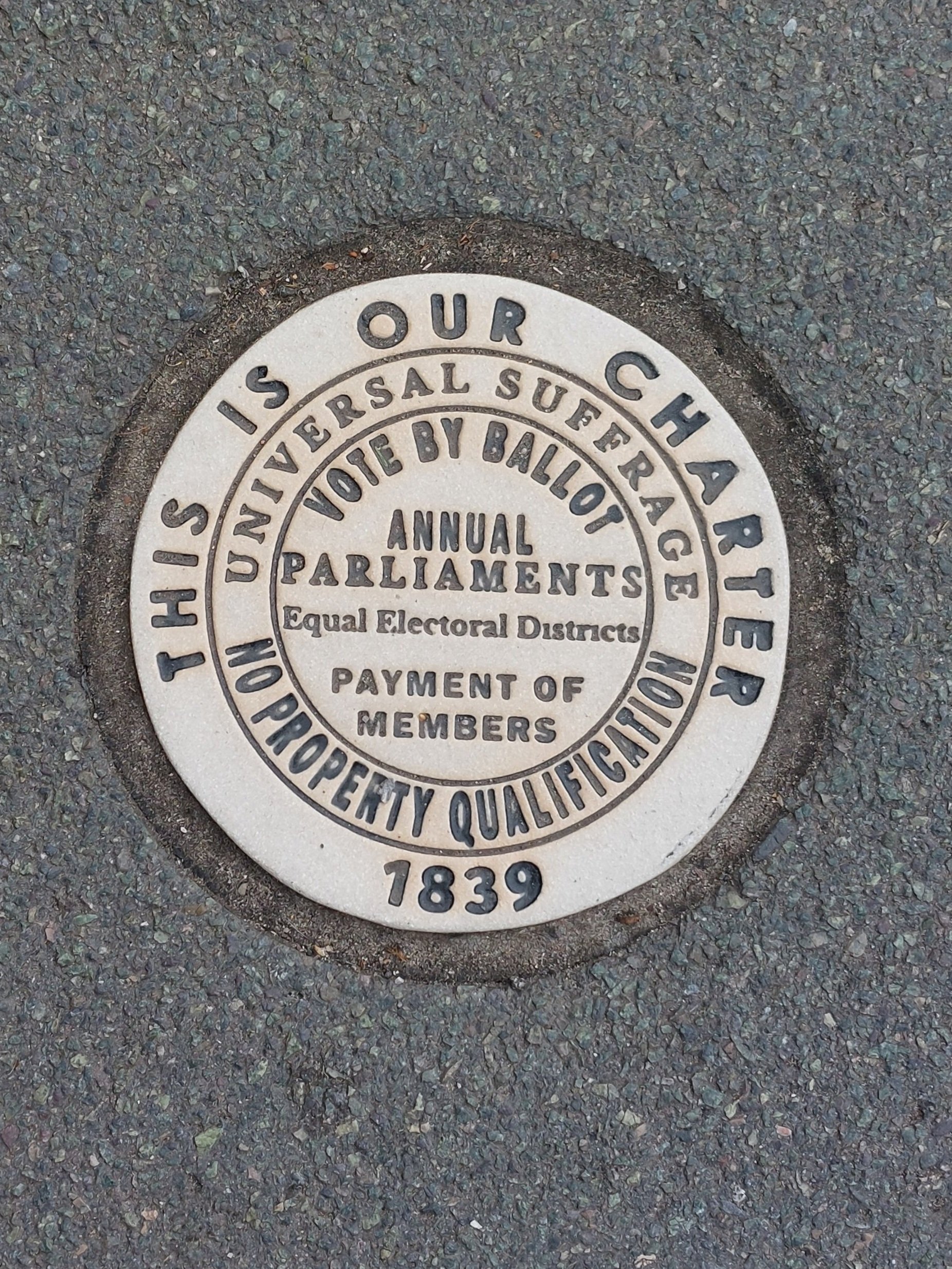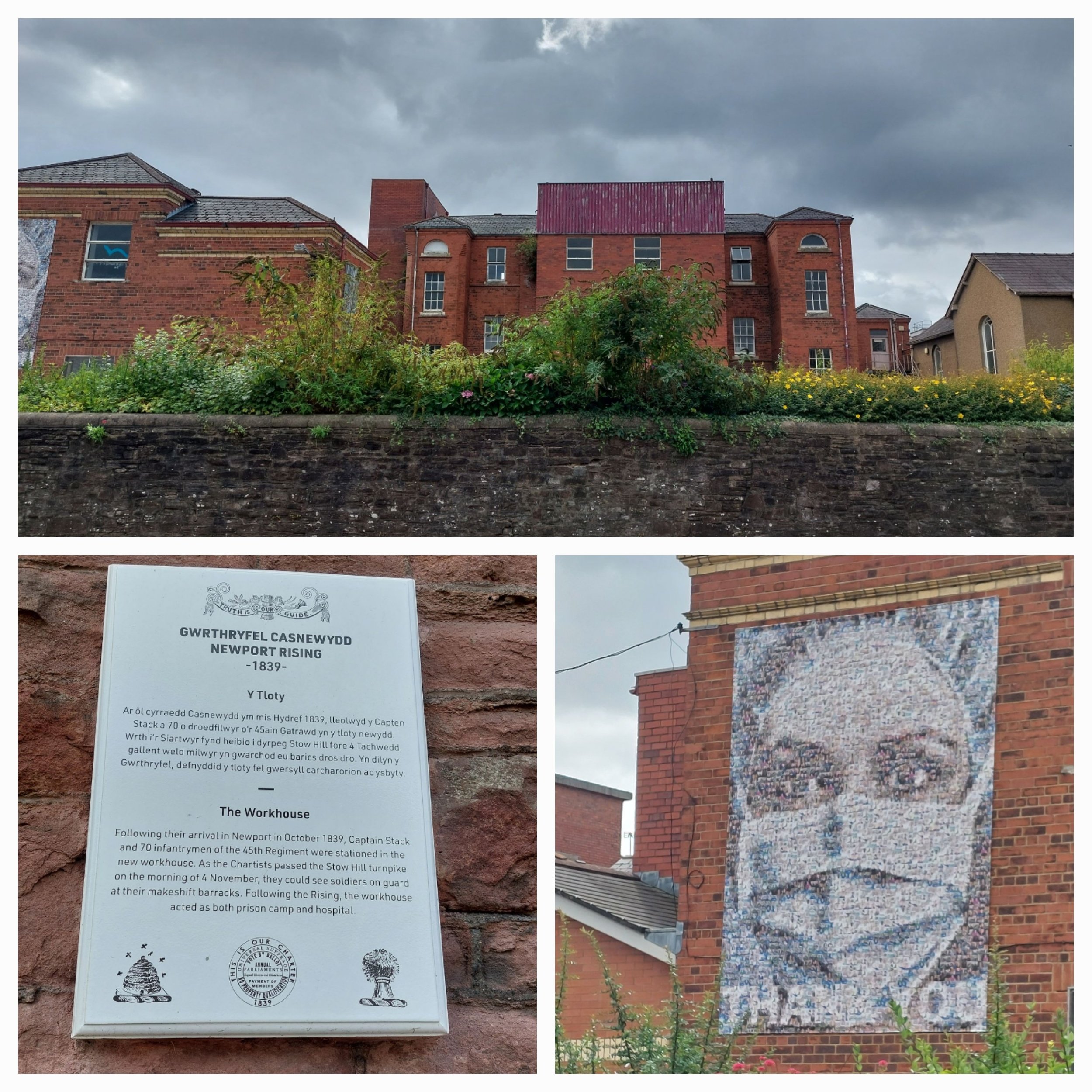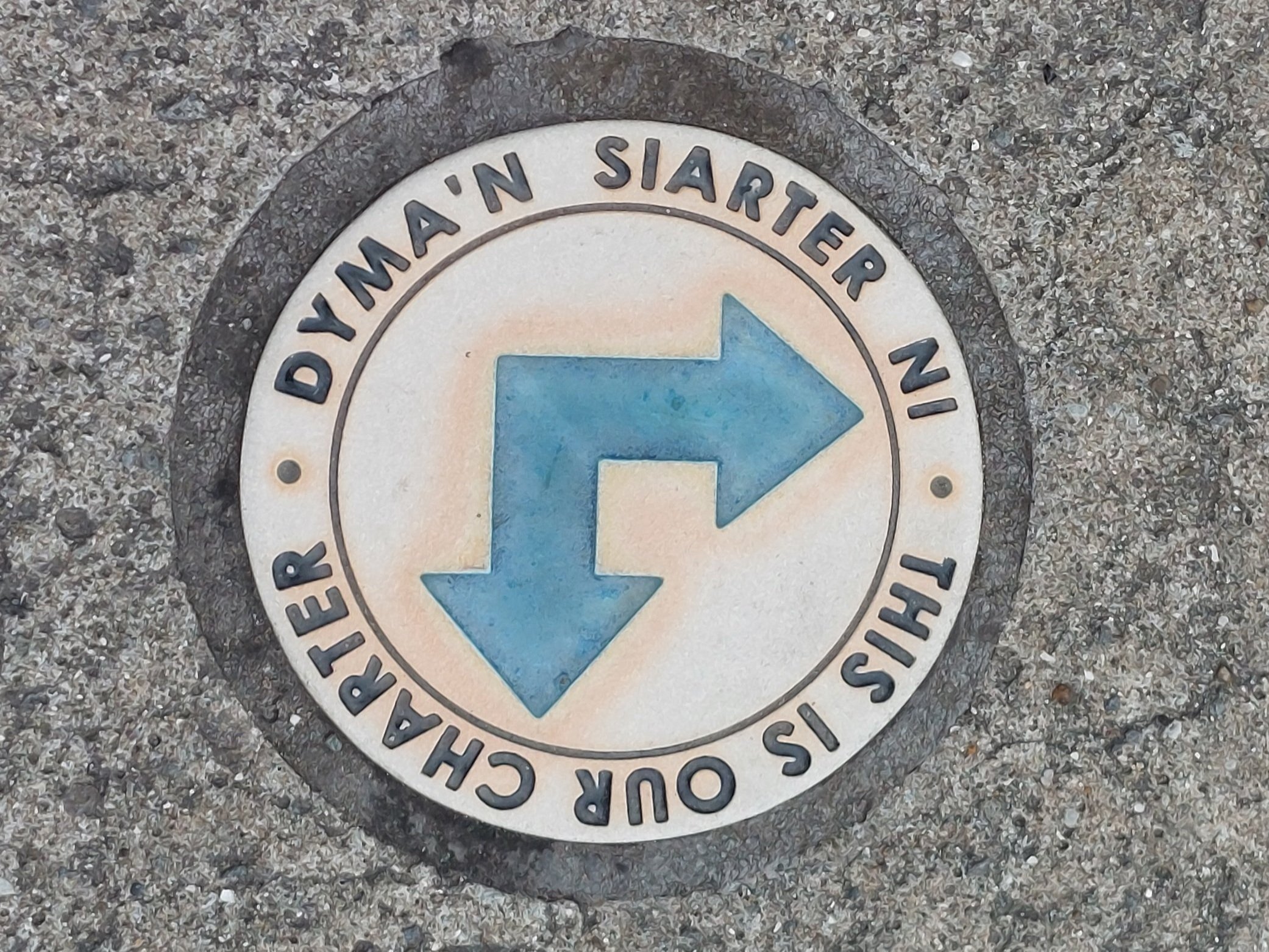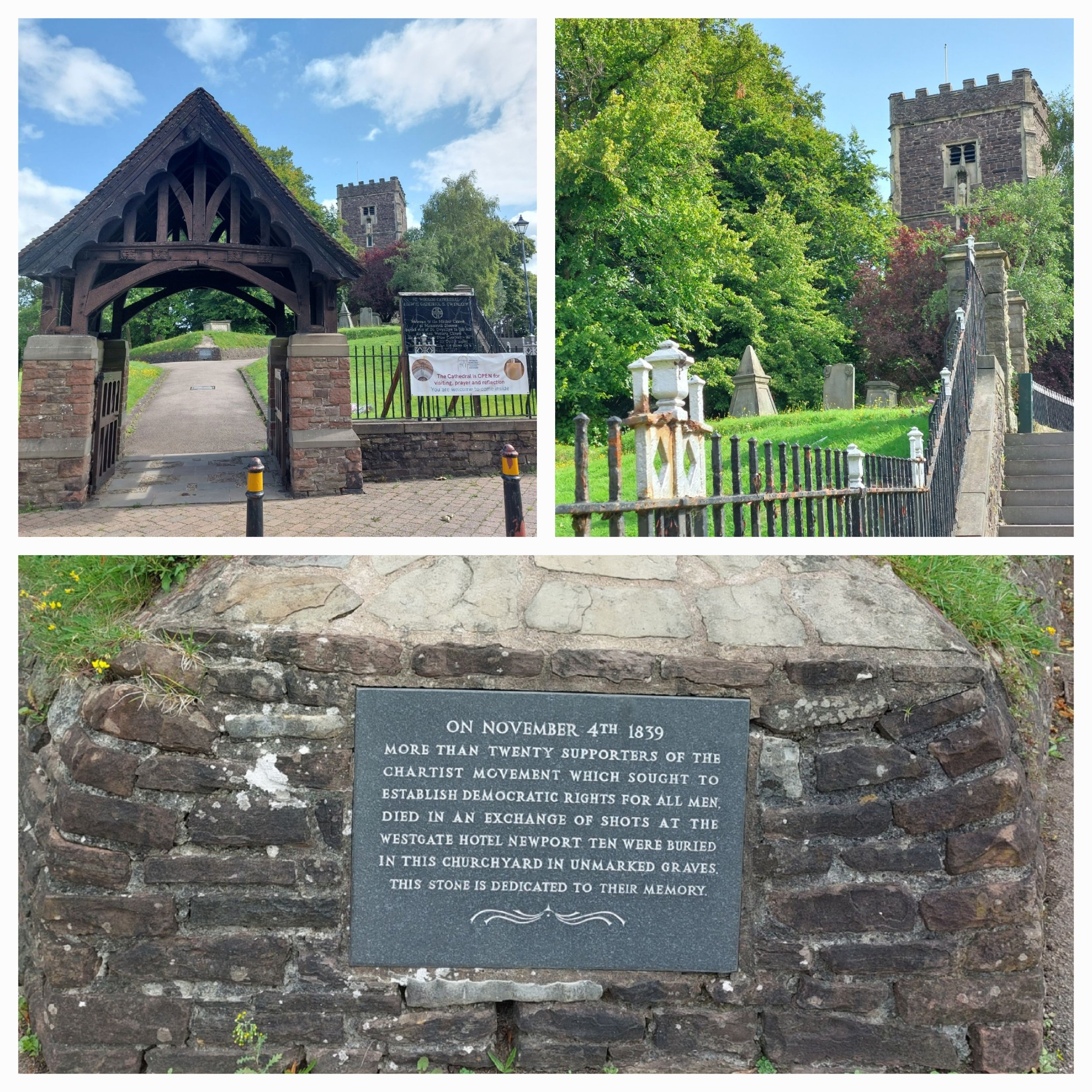Clara, the Priest and the Nordic Nomad-The Welsh Odyssey
Nordic Walking in Newport
Wednesday 30th August 2023
This is where Clara, the Priest and the Nordic Nomad – The Welsh Odyssey begins, now I’ll be honest I literally know nothing about Newport, I’ve driven past the signs for it on my way to Cardiff on the M4 numerous times, I’ve worked a couple of Events at The Celtic Manor Resort (the one on the right-hand side of the M4 up on a hill) I’ve even eaten at the local Toby Carvery (nearest to aforementioned Celtic Manor!) but I know nothing of it’s history, it’s importance or what happens there now. Wikipedia tells me that it is a city situated on the River Usk close to it’s confluence with the Severn Estuary, it had a population of nearly 160,000 in 2021, it is the third largest authority with city status in Wales and seventh most popular.
Newport has been a port since medieval times when the first Newport Castle was built by the Romans. Newport gained it’s first Charter in 1314 and was the largest coal exporter in Wales until the rise of Cardiff in the mid-1800’s. in the 20th century the docks declined, but Newport remained an important centre for manufacturing and engineering. Latterly its economy is bolstered as part of the M4 corridor high-technology cluster. It was granted city status in 2002. The original Welsh name was Casnewydd-ar-Wysg which translates as ‘new castle on the Usk’.
There’s plenty more history to discover online, but the trail I have found to follow today reveals the history and locations for the famous Newport Rising in 1839, which was the last large-scale armed rebellion against authority in mainland Britain. John Frost and 3000 other Chartists marched on Westgate Hotel at the centre of the town.
Now I know nothing about the Chartist movement so had to look it up! “Chartism was a working class movement which emerged in 1836 in London. The aim of the Chartists was to gain political rights and influence for the working classes”. The National Archives
The six points of the People’s Charter set out the Chartists main demands:
1. A vote for every man over the age of 21
2. Secret ballots
3. No property qualification
4. Payment of MPs
5. Constituencies of equal size
6. Annual Parliaments
For more detailed info go to www.chartistancestors.co.uk
First things first, this trail was written in 2009 and as I found out some of it no longer exists as we’ll find out later! Also it’s very difficult to follow an online trail on your phone ( needed my glasses, which I didn’t have!) so I took several screen shots of the the trail so I could enlarge it enough to read it on screen in the glare of the sun!
The trail starts near the Cathedral, so I leave Steve and Clara there and head off to St Woolos Hospital. I’m looking for a red sandstone building according to the trail, but I’m not sure if I ever identified the correct building! The trail highlights that back in 1839 this building was the Union Workhouse and as there was no NHS and social security then, if you were injured at work this was likely the place you would end up! Sewing sacks, eating gruel and known as a pauper.
I found some plaques in the pavement commemorating the trail – which gave me hope that these would continue to guide me (no such luck!)
The trail takes me to a beautiful building called Friars House (now an NHS building) which at the time of the rising housed Thomas Prothero who managed land for Lord Tredegar. He made his fortune from coal was rich because he did not pay his workers a fair wage. He was also suspected of electoral corruption in the Monmouth elections of 1831. He feared the Chartists uprising and fled Newport during the march.
The trail leads me back up the hill to St Woolos Square which is just outside the Cathedral grounds, on the morning of the 4th November 1839 this was where 3000 Chartists lead by John Frost and Zephaniah Williams met before marching down into the town. The trail tells me that 10 of the 22 Chartists that died that day were buried here secretly in the dead of night by the military, their ancestors hold a twilight service on the 4th November each year to remember them each year. There is a memorial plaque in the Cathedral grounds.
Some of the Chartists had previously been arrested during a peaceful protest and were being held in The Westgate Hotel in Newport and John Frost had organised this march to try and secure their release (some historians believe this was a trap to lure the Chartists into breaking the law)
The trail contradicts itself a few times, with different numbers of Chartists marching and locations of where they gathered differing, but it highlights The Six Bells pub (I completely missed it) as somewhere where school children now renact the march on the anniversary because they rallied here before marching on down Stow Hill. There is still a row of terraced cottages on the Southern side of Newport Cathedral that remain from that period.
When the Chartists marched past St Mary’s Church it was being built by Irish Immigrant workers who were called to join the march – there’s quite a bit of construction on another church opposite there now!
St Mary’s Church
Here the trail talks about the Mayor and how his house was opposite The Westgate Hotel, with memories of what happened to those in power during the French Revolution only a few years before he wanted to protect the town and garrisoned soldiers around it the day before. At 8.30am on the morning of the 4th November he had 30 soldiers join him at the Westgate Hotel stationed behind the closed shutters.
The Chartists reached The Westgate Hotel which was built in 1799 and sits at the junction of Stow Hill and the old High Street and they were shouting “give us up the prisoners!, give us up the prisoners!” There followed a scuffle between the 3000 (or 5000) Chartists and the special Constables, the shutters on the hotel flew open and the order to open fire was given. The soldiers fired volley after volley of shots into the crowd who panicked and fled screaming. 22 Chartists died that day and many more were injured in their fight for justice. Outside the Westgate Hotel today there stands three sculptures – Union, Prudence and Energy created by Christopher Kelly and erected in 1989 to commemorate the Chartist Uprising.
Top Right & Bottom Left- Union. Bottom Right-Energy
Prudence
The trail moves on to highlight various buildings around the city centre which were John Frosts birthplace, his draper’s shop and The Parrot Inn (former site of) where John Frost had his meeting to decide what ‘The People’s Charter’ should contain in 1938. Some of these buildings are beautiful and very grand indicating the importance of Newport at the time, As previous readers of my Nordic Walking blogs will know I love a bit of classic architecture and it’s such a shame that modern facades spoil these buildings now. Look up folk, always look up!
I spent more time than I care to admit looking for a mosaic mural designed by Kenneth Budd and installed in an underpass at John Frost Square in 1978 which illustrates the story of the Chartists march. I asked a lady part of a group protesting (how apt) in the town centre who replied “ Oh no love, we tore that down, it’s what the people of this city do best” However a bit of research online led me to discover that it was indeed taken down in 2013 to make way for a complete redevelopment of that area (the Friars walk shopping development) However in 2019 a new mosaic mural was created by Oliver Budd, son of Kenneth Budd. A smaller scale replica of the original, but it’s located in a different area. www.walesonline.co.uk/whats-on/arts-culture-news/newport-rising-chartist-mural-uprising-17196726?int_source=amp_continue_reading&int_medium=amp&int_campaign=continue_reading_button#amp-readmore-target
You can watch the original mosaic being ripped down and a picture of the new one here.
around Newport
After a quick wander around the centre of Newport (quite run down with the same shops as every other city centre) I headed back up towards the Cathedral to meet Steve and Clara. We then decide to find somewhere for a wild swim possibility and paused at a local supermarket for sandwiches to add to our lunch! Some of the trees here are over 200 years old and the paths down to the lake are steep and uneven as we discovered! The unusual shape of the punchbowl was formed by glacial erosion during the last Ice Age, the lake was added later by people and not a natural feature. The bowl-like depression left behind by the ice is called a cwm (Welsh for valley).
We ended up stopping off at a parking spot with a great view before driving on to The Punchbowl at Llanfoist, managed by the Woodland Trust.
As we entered the Punchbowl we were met with a the noise of group of lads who were camping, fishing and had lit a fire (why are groups of boys so loud!) Undeterred we walked around the lake, chose a suitable spot and enjoyed a lovely swim despite the shouting! One of the lads informed us there were sharks and crocodiles in the water! It was a chilly swim at times with weird cold spots, but the sun was shining which makes everything better!
The climb back to Clara soon warmed us up and we set off for Llanwrtyd to stay in the field of old friends from our Nijmegen days. We were treated to a lovely meal at The Castle Hotel Llandovery which made all the more special by the local Llandovery Male Voice Choir joining us after their practice and serenading us! Back to Llanwrtyd for the night by the river!
